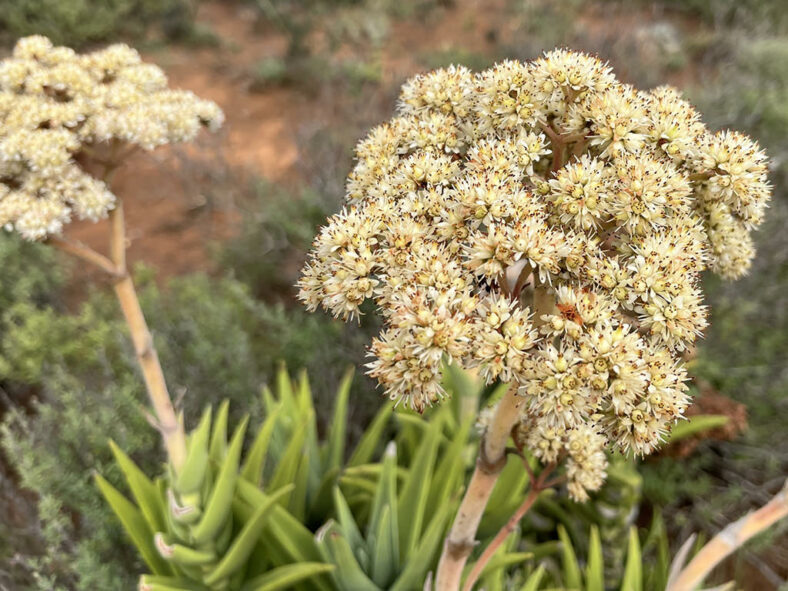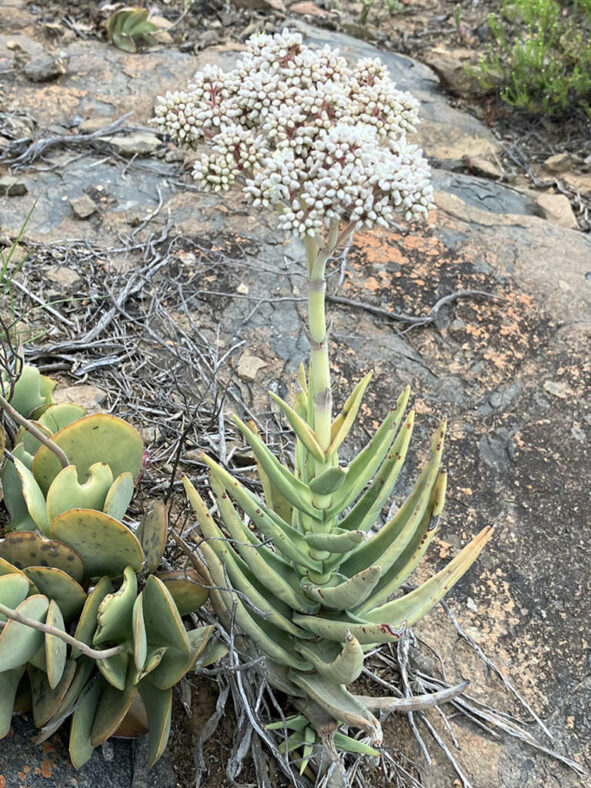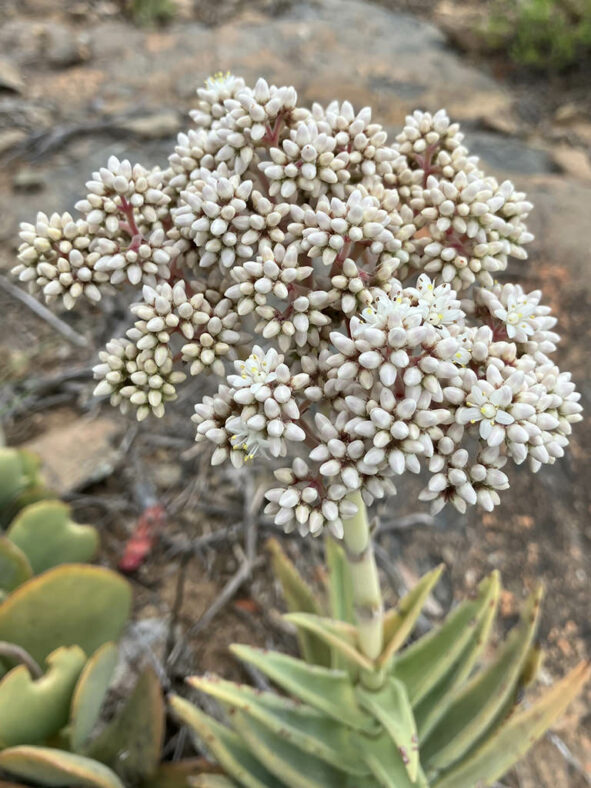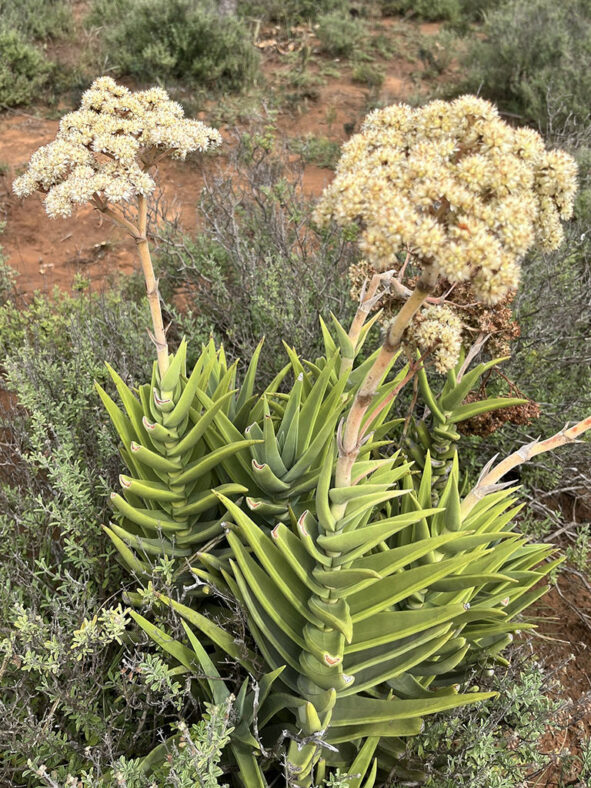Scientific Name
Crassula perfoliata L.
Synonym(s)
Crassula perfoliata var. perfoliata, Larochea perfoliata, Rochea perfoliata
Scientific Classification
Family: Crassulaceae
Subfamily: Crassuloideae
Genus: Crassula
Etymology
The specific epithet "perfoliata" (pronounced "per-foh-lee-AY-tuh") means "appearing to have the stem passing through the leaves; having the leaf around the stem at the base." It refers to the opposite leaves that are joined at their bases, making it look like the stem is passing through the leaf blades.
Origin
Crassula perfoliata is native to South Africa. It grows on dry lower slopes from the Groot Winterhoek Mountains and Port Elizabeth to Umtata in the Eastern Cape province.
Description
Crassula perfoliata is a sparingly branched succulent shrub with erect branches bearing opposite, lance-shaped to triangular, green to gray leaves, sometimes with purple spots. It can grow up to 5 feet (1.5 m) tall. The branches are green, succulent, and become woody with age. The fleshy leaves can measure up to 3.8 inches (9.5 cm) in length and 0.7 inches (1.8 cm) in width. The old leaves are persistent on the branches.
The fragrant, white flowers appear in dense, rounded clusters on erect stalks from spring to mid-summer. They are small, tubular below, and star-shaped above. The flower stalks can grow up to 6 inches (15 cm) tall.
Varieties and Forms of Crassula perfoliata
- Crassula perfoliata var. coccinea
- Crassula perfoliata var. minor
- Crassula perfoliata var. minor f. variegata

How to Grow and Care for Crassula perfoliata
Light: Crassula perfoliata prefers full sun to partial shade. However, intense afternoon sun on the hottest summer days can burn the leaves of the plant. Therefore, a place with morning sun and afternoon shade would be perfect. Indoors, place your plant in a window that receives at least 6 hours of direct sunlight.
Soil: This plant is not particular about soil pH but requires very porous soil with excellent drainage. Use commercial potting soil mixes designated for succulents, or mix your own.
Temperature: Like most Crassulas, this succulent will tolerate short-term freezing, but extremes of cold or heat will cause it to lose leaves and die. Crassula perfoliata grows best in USDA Plant Hardiness Zones 9b to 11b, with average minimum winter temperatures ranging from 25°F to 50°F (-3.9°C to 10°C).
Watering: Avoid overwatering by using the "soak and dry" method, where the soil is soaked with water, slowly drained, and left to dry out before watering again. Reduce watering in winter. Potted plants require more frequent watering than those in the ground.
Fertilizing: Crassula perfoliata does not need much feeding, but will benefit from a small amount of organic fertilizer in mid-spring when it starts actively growing.
Repotting: Repot as needed, preferably in spring, at the beginning of the period of active growth of the plant. Make sure the soil is dry before you begin repotting.
Propagation: This succulent is generally started by leaves or stem cuttings. It can also be grown from seeds. The easiest way to propagate Crassula perfoliata from a single leaf, while using stem cuttings, is the fastest way to get a decent-sized plant. These processes are most successful at the beginning of the growing season. Sow the seeds in the spring or summer.
Learn more at How to Grow and Care for Crassula.
Toxicity of Crassula perfoliata
Crassula perfoliata is nontoxic to people and pets.
Links
- Back to genus Crassula
- Succupedia: Browse succulents by Scientific Name, Common Name, Genus, Family, USDA Hardiness Zone, Origin, or cacti by Genus
Photo Gallery
Click on a photo to see a larger version.


